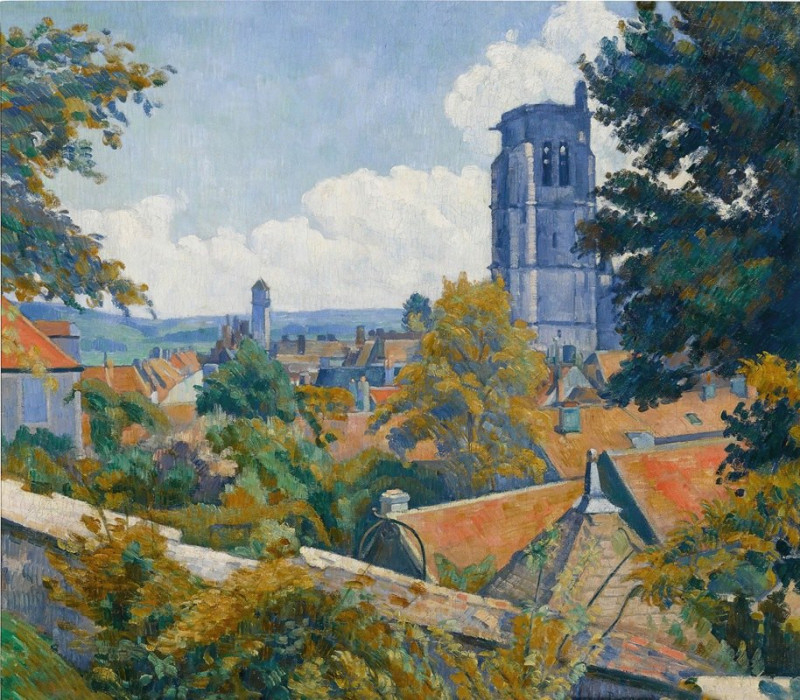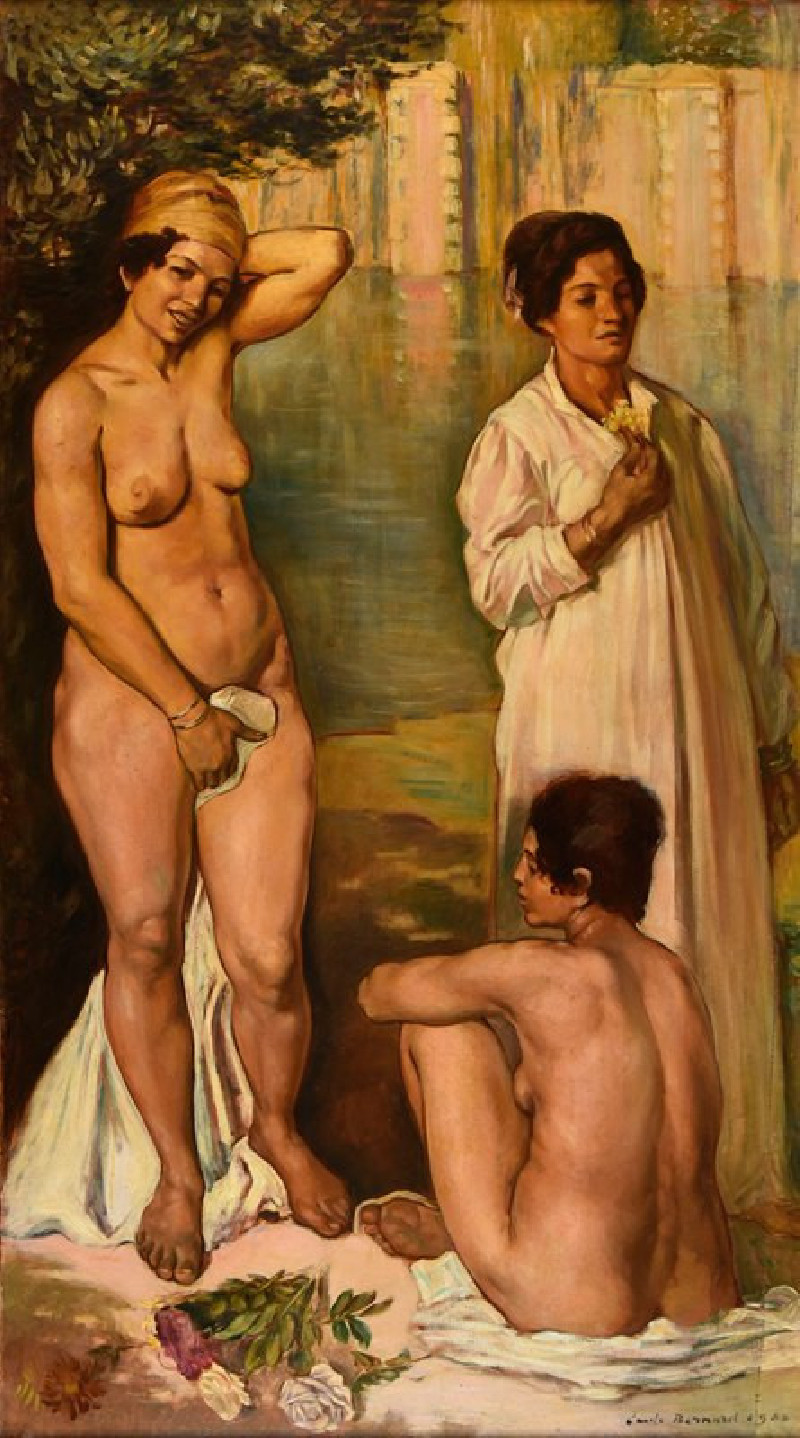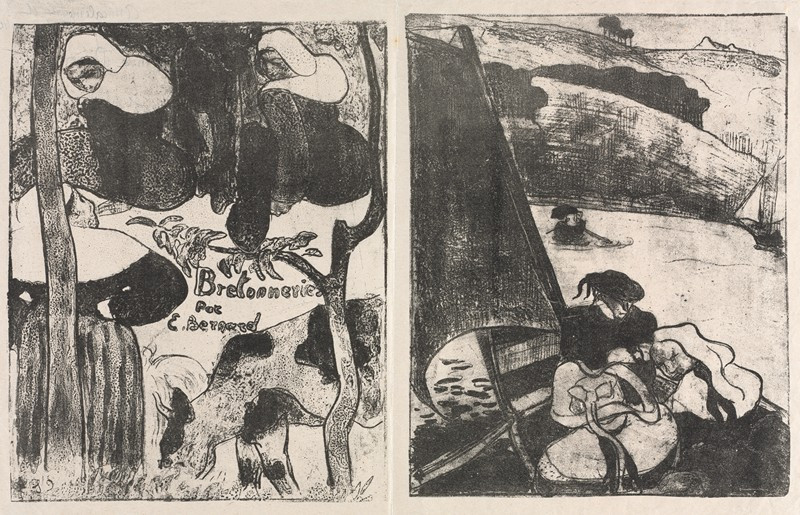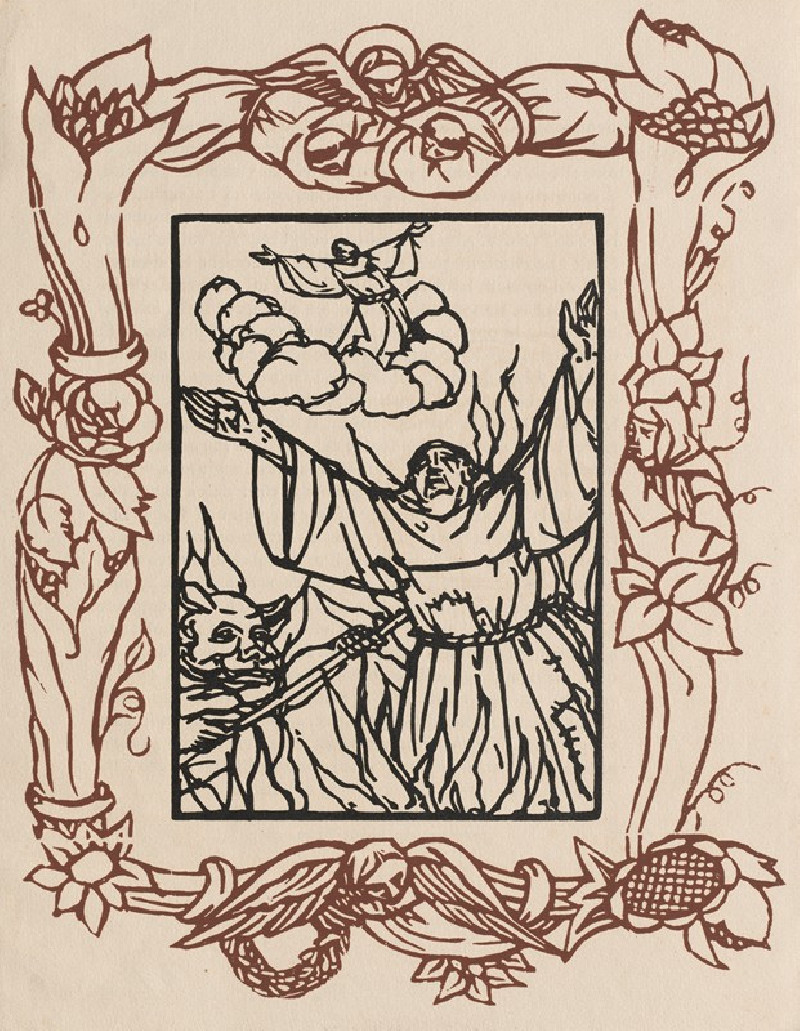Hercule et Omphale (1911)
Technique: Giclée quality print
Recommended by our customers
More about this artwork
Emile Bernard's captivating painting "Hercule et Omphale" from 1911 is a striking visual representation of a mythical narrative, bringing to life the complex dynamics of domination and affection entwined between the legendary hero Hercules and the Lydian queen Omphale. In this powerful composition, Bernard portrays Hercules, typically recognized for his brute strength and heroic feats, in a moment of vulnerability and subtle submission. He is seen reclining, his robust figure contrasted with his gentle, almost contemplative posture as he gazes upwards. Beside him, Omphale, assertive and regal, directs Hercules' gaze, symbolically holding the strings of power—a reversal of traditional roles.The warmth and richness of the colors highlight the sensuality and intimacy of the scene. Omphale's vibrant orange and red-hued garment draws the eye, emphasizing her dominance in this particular mythological episode. Additionally, Bernard introduces a playful yet symbolic element: a cherub who mischievously interacts with the heroes, further lightening the traditionally mighty representation of Hercules.Bernard's mastery in blending myth with a nuanced exploration of gender roles creates a thought-provoking piece that invites viewers to contemplate power, identity, and the interplay of strength and compassion.
Delivery
Returns
Émile Henri Bernard (28 April 1868 – 16 April 1941) was a French Post-Impressionist painter and writer, who had artistic friendships with Vincent van Gogh, Paul Gauguin and Eugène Boch, and at a later time, Paul Cézanne. Most of his notable work was accomplished at a young age, in the years 1886 through 1897. He is also associated with Cloisonnism and Synthetism, two late 19th-century art movements. Less known is Bernard's literary work, comprising plays, poetry, and art criticism as well as art historical statements that contain first-hand information on the crucial period of modern art to which Bernard had contributed.














































